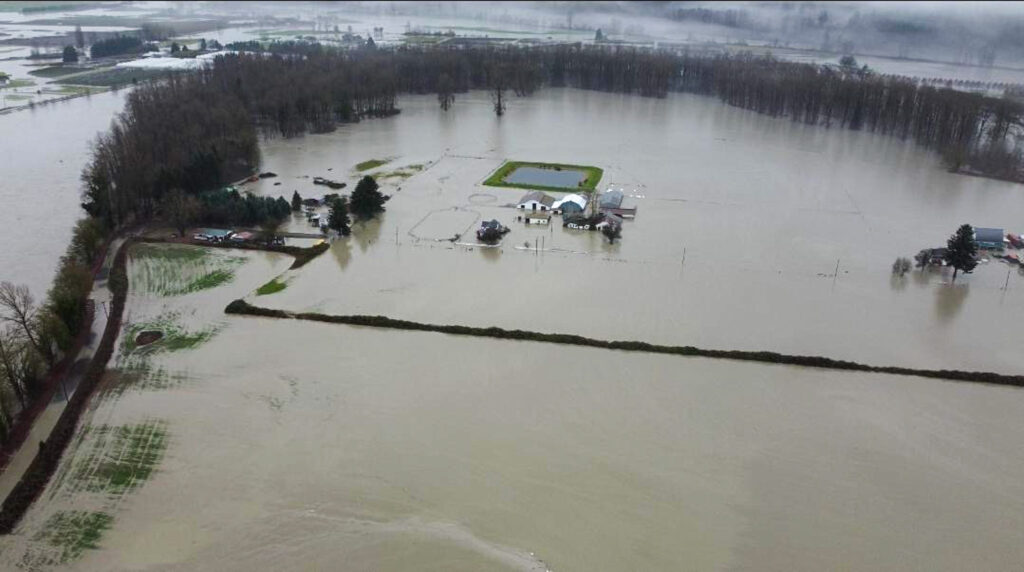
Climate change is playing out right before our eyes and as the planet warms, storms will increase in intensity and severity followed by longer periods of drought. These are not insurmountable problems – this is a design and systems issue that proactive investments in climate resilience would address.
In December 2023, another atmospheric river hit northern Washington and Oregon causing major flooding including the highest levels ever recorded in the Stillaguamish River.
However, much of this precipitation fell on the west side of the Cascades and did not help the drought-starved eastern side of the states – where most of our food is produced.
The long narrow bands of warm water vapor that make up atmospheric rivers extend far out into the Pacific Ocean and carry vast amounts of water. A strong atmospheric river can transport 7.5-15 times the average flow of water at the mouth of the Mississippi River. Similar atmospheric rivers were responsible for record rainfall in the Pacific Northwest in November 2021 which caused over $180 million in damages to northwest Washington and billions in British Columbia. In the case of California, a series of atmospheric rivers dropped 30 trillion gallons of water on the state in 2022 and 2023 resulting in over $30 billion in damages to farmland and infrastructure. An atmospheric river in February, 2024 caused significant flooding and over 475 mudslides in southern California. The damage of which is still being calculated.
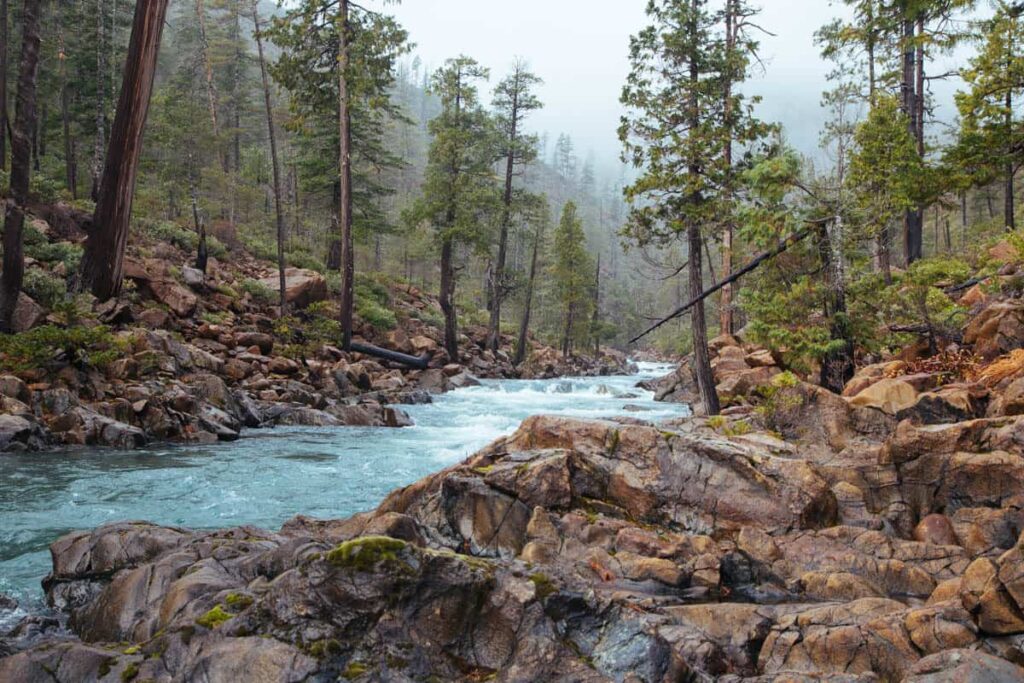
Let's Stay in touch!
We’re hard at work for rivers and clean water. Sign up to get the most important news affecting your water and rivers delivered right to your inbox.
While these types of storms are not new, they are becoming increasingly intense and frequent with climate change and intense El Niño weather patterns. With increasing ocean temperatures, warmer air holds more water- resulting in larger storms. These events provide between 30-50% of all precipitation on the West Coast.
Simultaneously, increasing temperatures on land are causing the snow line in many places to increase in elevation resulting in rain instead of snow. While historically metered out over several months of snowmelt, precipitation now comes all at once across a larger drainage basin – contributing to larger floods and prolonged periods of drought.
As stated previously, most of the rain from these storms is trapped on the west side of the Cascade Mountains, contributing little to the desperately needed snowpack in agricultural areas in the Columbia River Basin. In July, 2023 the state of Washington declared a drought emergency for 12 counties due to expected water supply falling 75 percent below normal. Current winter precipitation projections estimate this drought will continue into 2024, causing further undue hardship for water users and the environment.
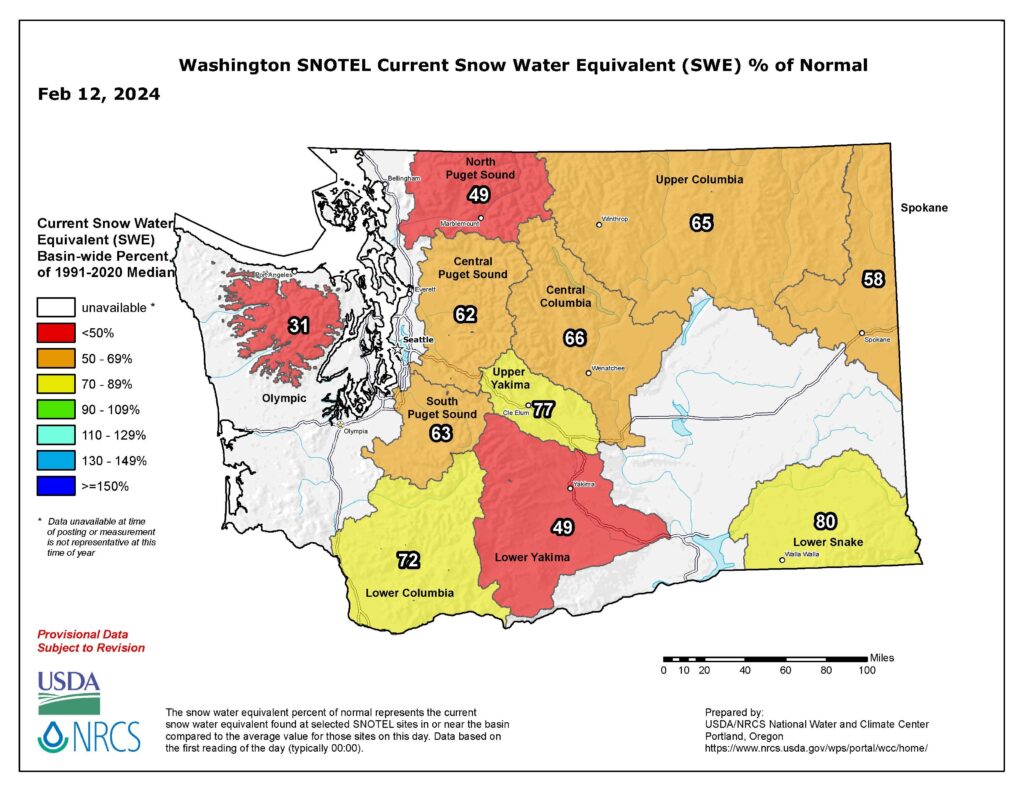
Communities across the Northwest, and indeed the country, are addressing this in different ways. Indigenous knowledge is being increasingly adopted and communities are developing integrated nature-based solutions to restore floodplains – nature’s sponge.
In their natural condition, floodplains store water, reducing downstream flood damage and recharging groundwater levels while also providing critical habitat for threatened and endangered salmon species.
Washington’s Floodplains by Design (FbD) program promotes the idea of integrated floodplain management that aims to improve the resiliency of floodplains by incentivizing multi-benefit approaches that help make communities and the environment safer, healthier, and more resilient to a rapidly changing climate. This approach looks at the entire river or watershed to understand the different dynamics of flooding, and the diverse needs represented in the floodplain. By working collaboratively across interests, nature-based solutions can be developed to minimize flood risk while also supporting agriculture, salmon restoration, Tribal Treaty rights, and responsible economic development. Not every project can mean a win for every interest, but with strategic vision and benefit-sharing, we can work collaboratively towards a watershed system that will, over time, function better for people, fish, farms, and cities.
During the 2023 global climate conference (COP28) in Dubai, Washington’s FbD partnership was recognized as a leading nature-based approach to climate and community resilience in the face of rising sea levels and increased flood risk. On December 2, The Nature Conservancy’s (TNC) Global Climate Adaptation Director Daniel Morchain, highlighted FbD during a panel discussion emphasizing the need to bring nature-based climate solutions to scale, noting FbD’s collaborative and multi-benefit approach to watershed climate resilience.
FbD was founded by TNC, and currently led by the Washington State Department of Ecology, the Bonneville Environmental Foundation with support from American Rivers. The FbD partnership aims to accelerate integrated efforts to reduce flood risks to communities, and restore fish habitat along Washington’s river corridors. This approach relies on collaboration and engagement from all parties to create long-term solutions and has resulted in reconnecting over 11,374 acres of floodplains, removed or reduced flood risk to 8,482 homes or structures and reduced flood risk for 85 different communities.
Recognition at COP28 comes on the heels of FbD receiving Washington’s Climate Commitment Act funding to advance floodplain management along the Quillayute River- a project that will increase climate resilience for the Quileute Tribe in the face of rising sea levels and riverine flooding.
FbD shows that the impacts of climate change are not insurmountable problems, and it is only by working together across multiple interests that long term solutions can be developed. Increased investment in climate resilient programs like FbD are critical to address the climate crisis.


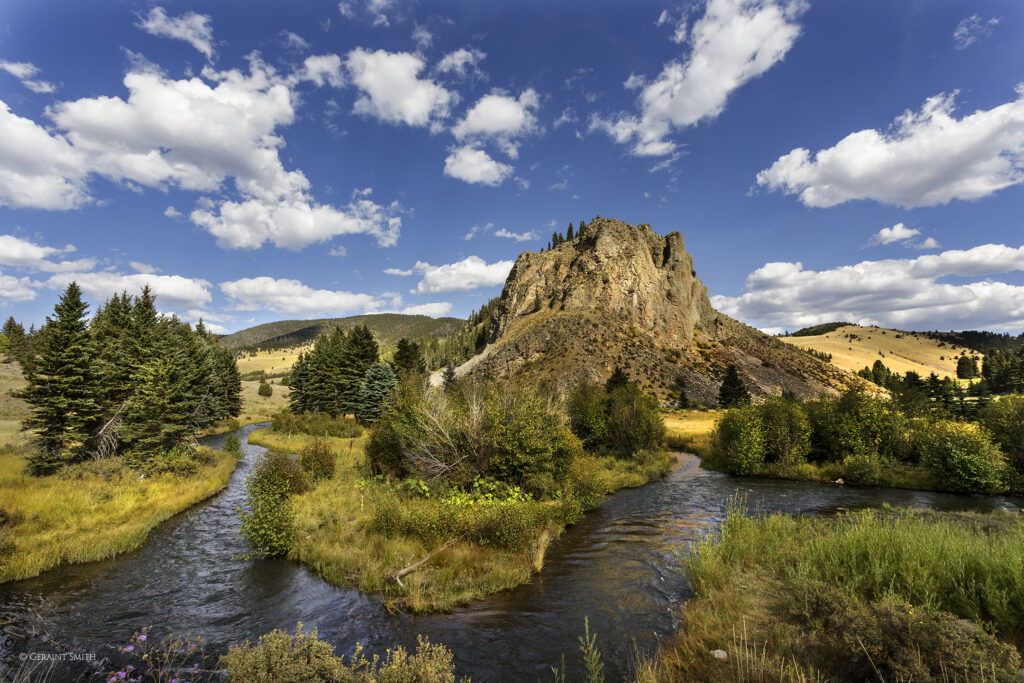
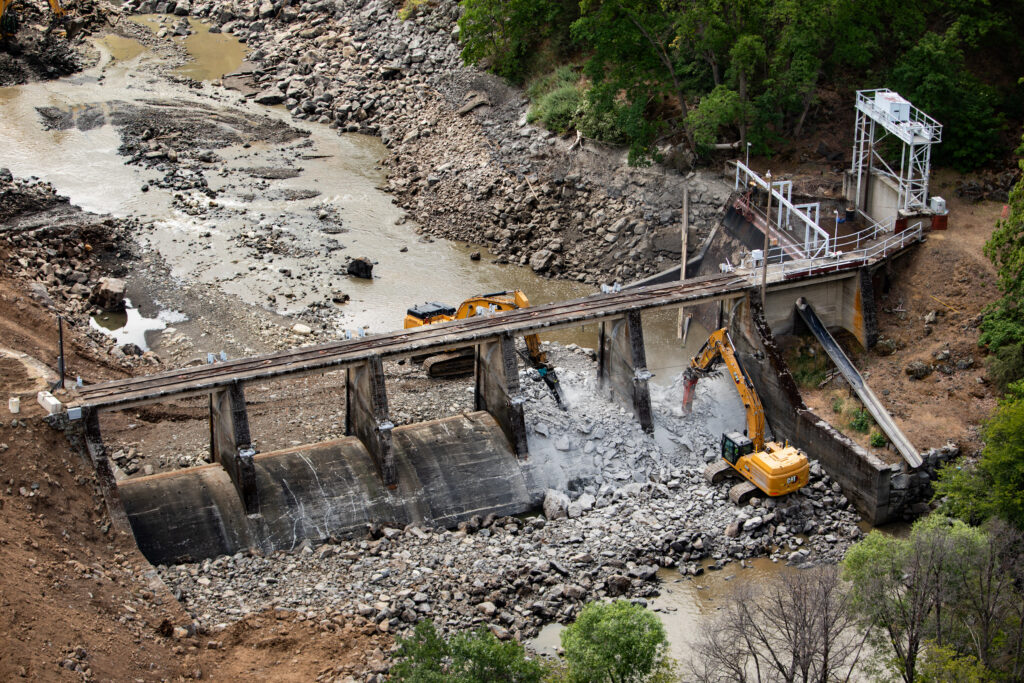
1 response to “Climate Resilience in Washington”
Great job explaining and telling what you think.